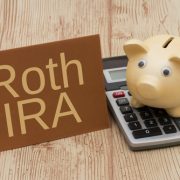What Investors Should Know about Different Self-Directed Retirement Accounts
Many investors know that there are a wide variety of retirement investments available to them. But when it comes time to choose an account, they might not always know the full slate of options they can choose from. That’s particularly true with Self-Directed IRA investing, in which investors can place a wide variety of investments into their Retirement Accounts. But even before that happens, investors have to answer a fundamental question: which Self-Directed IRA account is right for them?
Here at American IRA, we feature a list of the different Self-Directed IRA accounts available. Let’s briefly look through them, with a quick summary of why investors might choose one in particular:
- Self-Directed Traditional IRA: This is the oldest retirement plan out there, at least in the United States. Any individual who has earned income and wants to set aside some of their money for retirement on a tax-deferred basis can use a Self-Directed Traditional IRA. You can also keep making contributions until the age of 72, at which point it becomes required to begin taking distributions and paying taxes on the income received from the IRA.
- Self-Directed Roth IRA: Investors who want to pay taxes upfront use the Self-Directed Roth IRA. This requires certain conditions, including earned income. Contributions can be made to a Self-Directed Roth IRA even after retirement age, because the taxes on this money are paid via the income tax; this is why contributions to a Roth IRA are not tax-deductible. These accounts are ideal for people who believe they’ll have more money upon reaching retirement age and want to front-load their tax burden. By using a Roth IRA, the profits from investments grow tax-free.
- Self-Directed SEP IRA: A Self-Directed SEP plan, or simplified employee pension plan, is a way for employers to make contributions to employees’ retirement. This may also be a self-employment possibility for investors who want to put money aside with higher contribution limits, but it will require that the investor have self-employment income.
- Self-Directed Solo 401(k): The Self-Directed Solo 401(k) plan is IRS approved as a 401(k) plan, designed for self-employed LLCs, sole proprietors, or even people who self-employ through a corporation. The individual can make contributions both as the employee and the employer, which results in high contribution limits available on the account.
- Self-Directed SIMPLE IRA: The Self-Directed SIMPLE IRA is an efficient way for a small employer and even a self-employed individual to set up a retirement plan. It’s typically for companies up to 99 employees, which keeps its scope limited, but can be very efficient for small companies who don’t anticipate growing beyond that number.
- Self-Directed HSA: The Self-Directed Health Savings Account is a tax-exempt trust or custodial account that an individual can set up with an HSA trustee to pay/reimburse medical expenses that you might occur, provided these expenses are valid.
When you know the options on the table, it becomes much easier to see a way forward to retirement, even if you’re not experienced with retirement investing. Some investors may also carry multiple types of the accounts above; however, it’s worth noting that contributions may be limited. For example, the contributions to an IRA are capped no matter how many different IRAs you use; you can’t open new IRAs to get around these rules, as the contributions will be noted on your tax return.
Interested in learning more about Self-Directed IRAs? Contact American IRA, LLC at 866-7500-IRA (472) for a free consultation. Download our free guides or visit us online at www.AmericanIRA.com.










